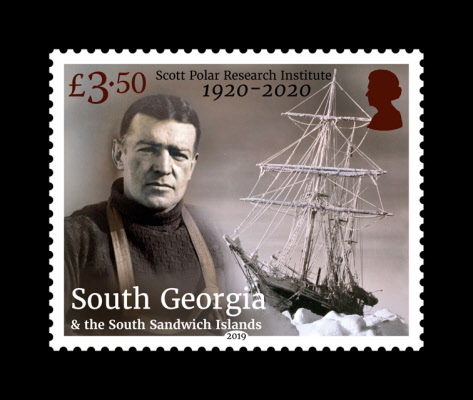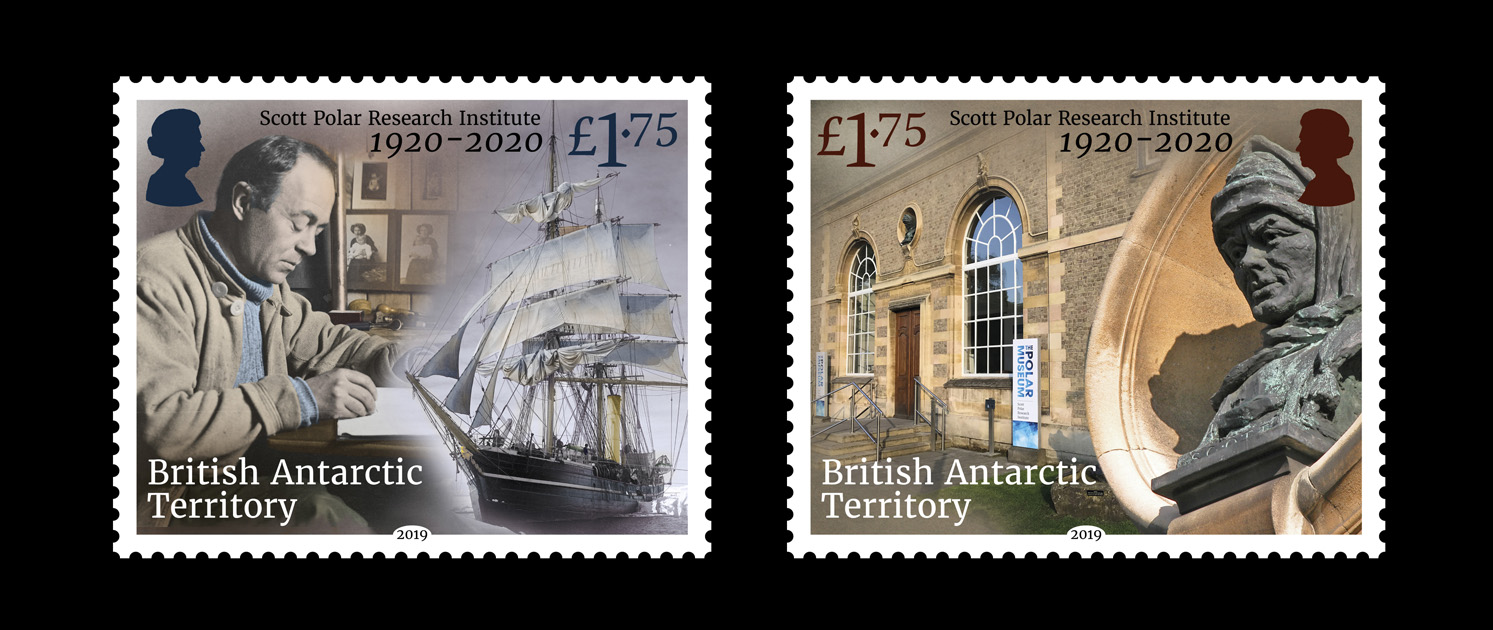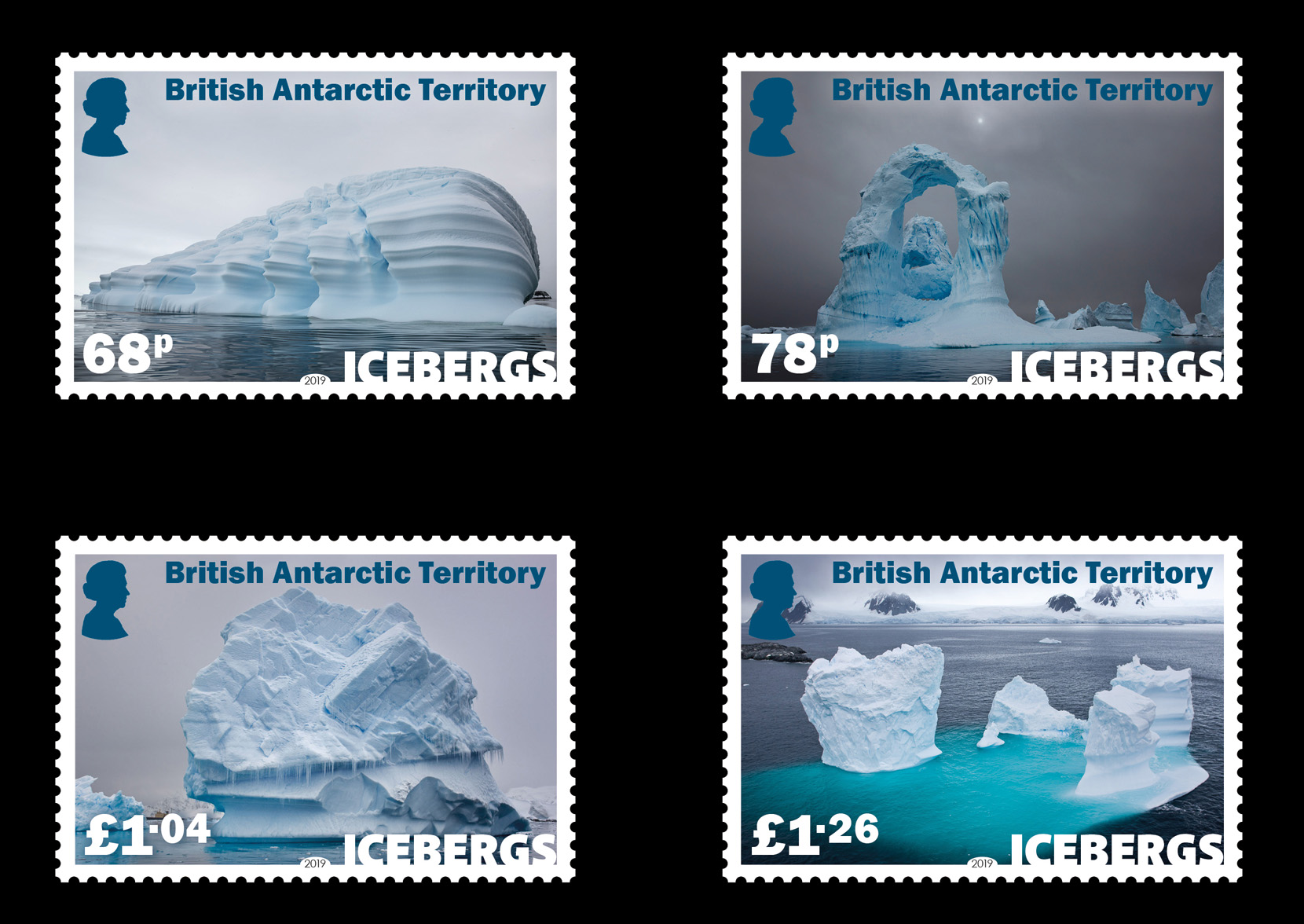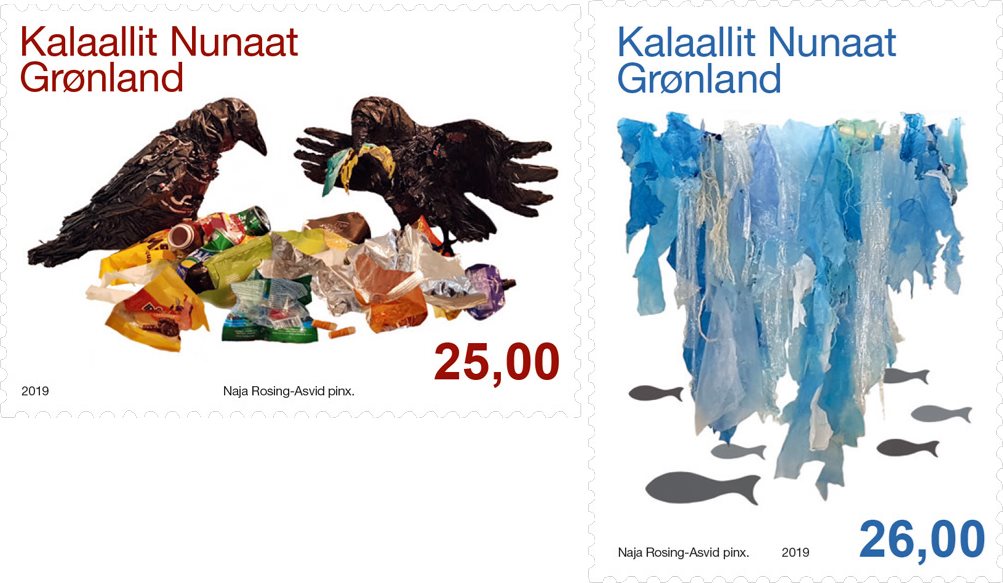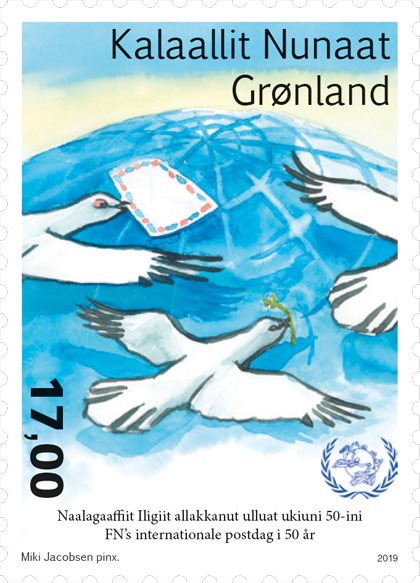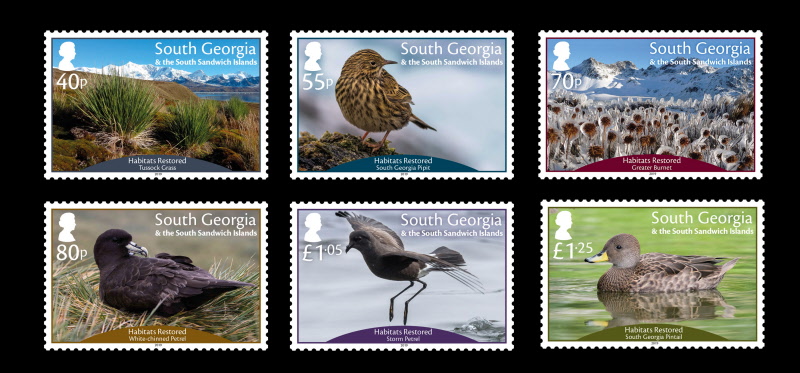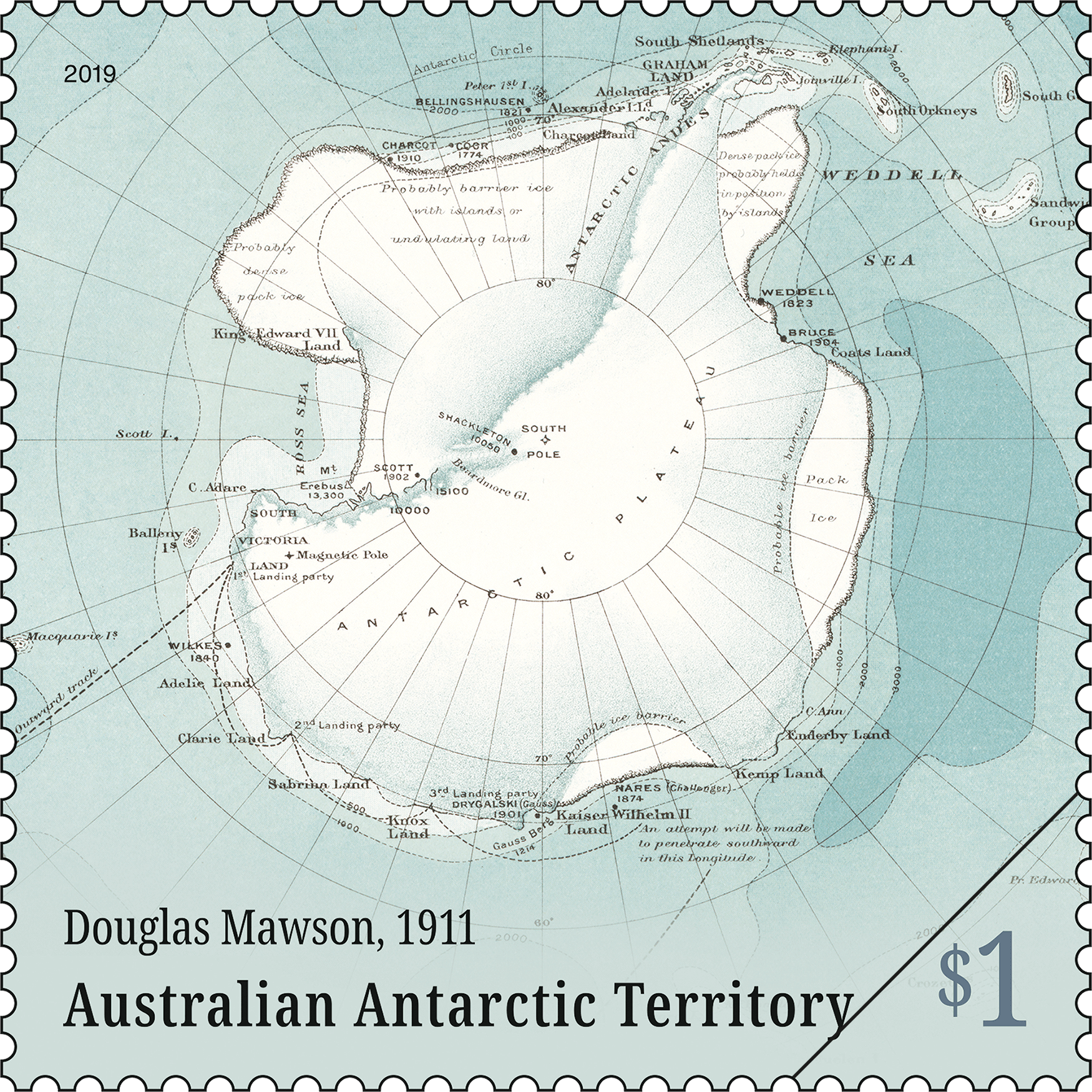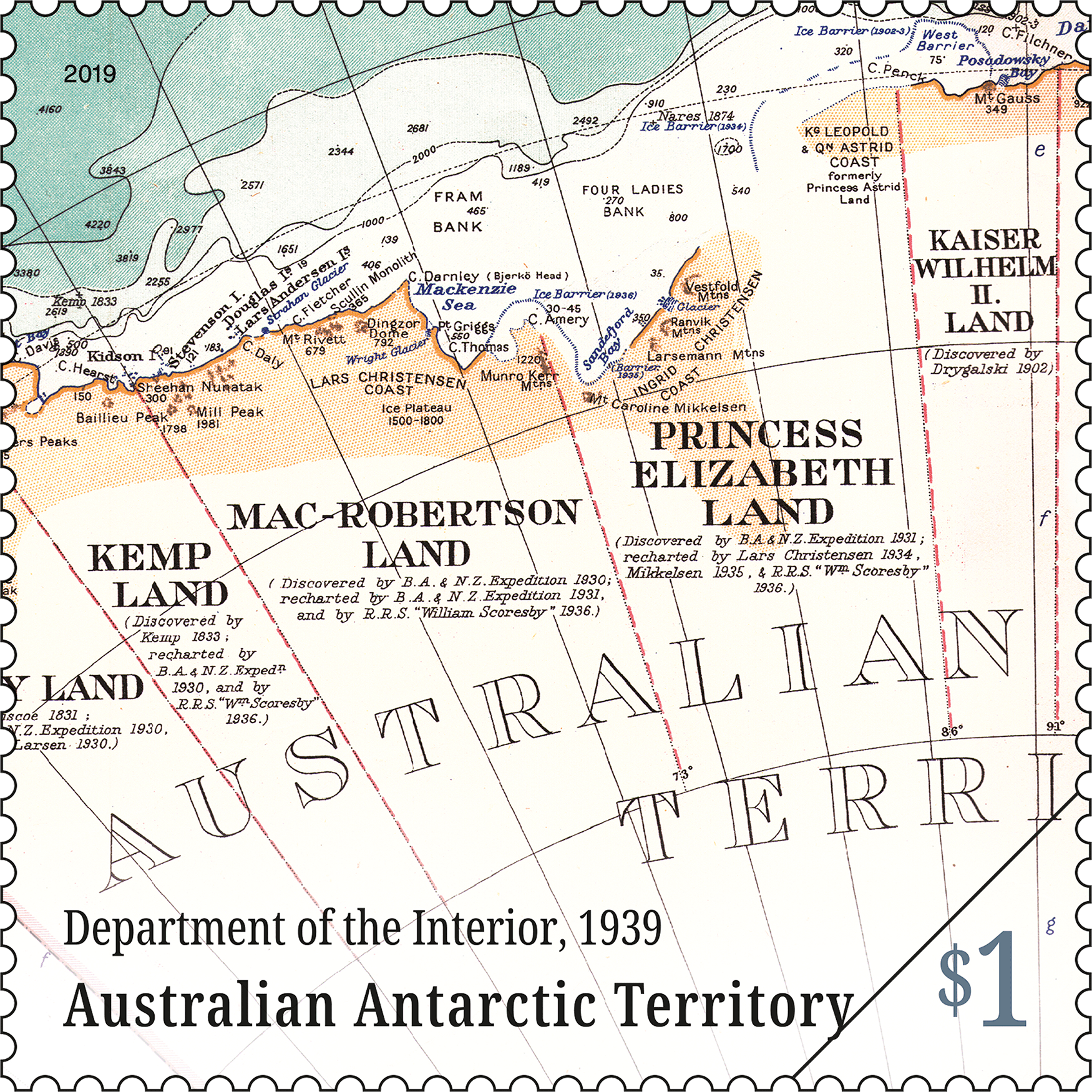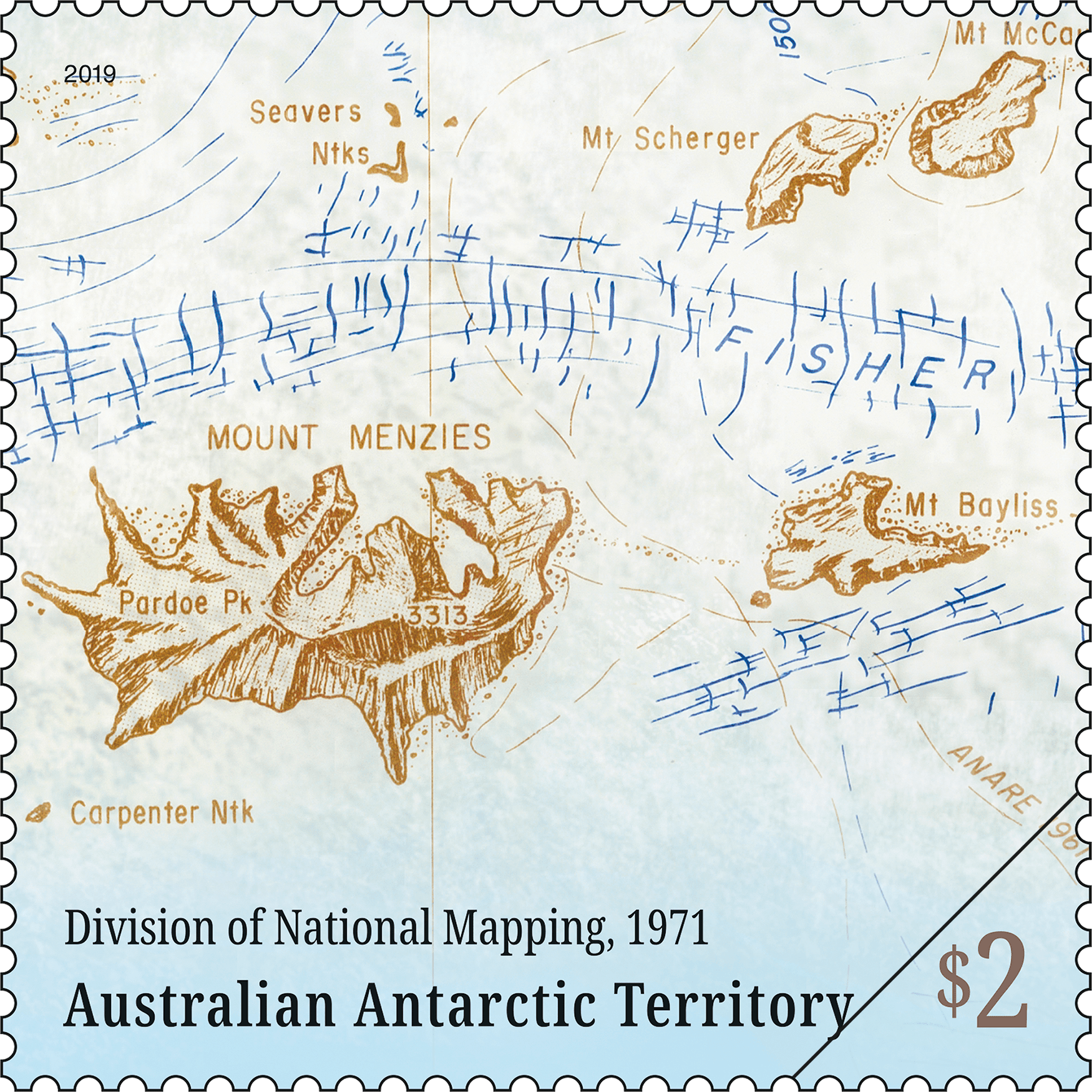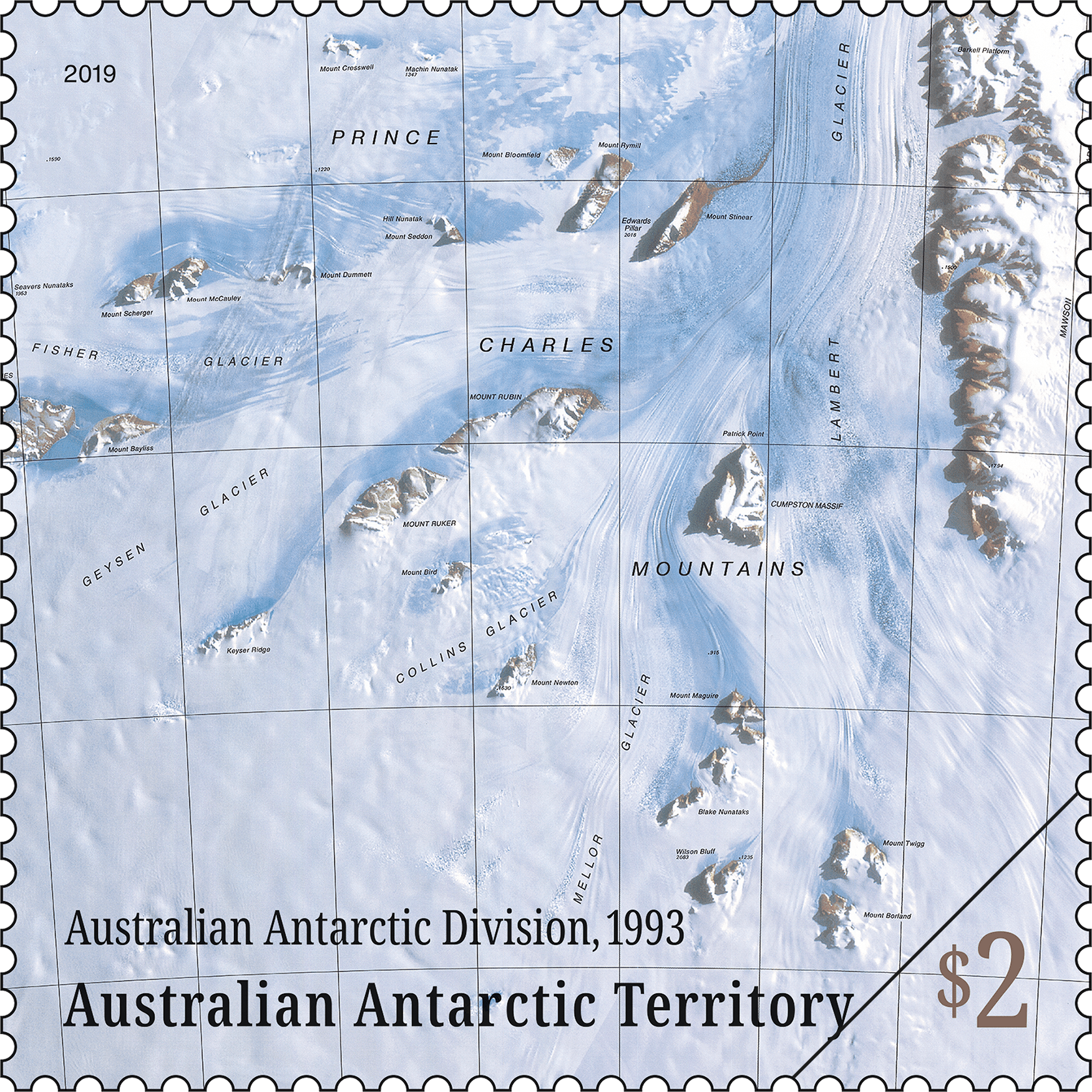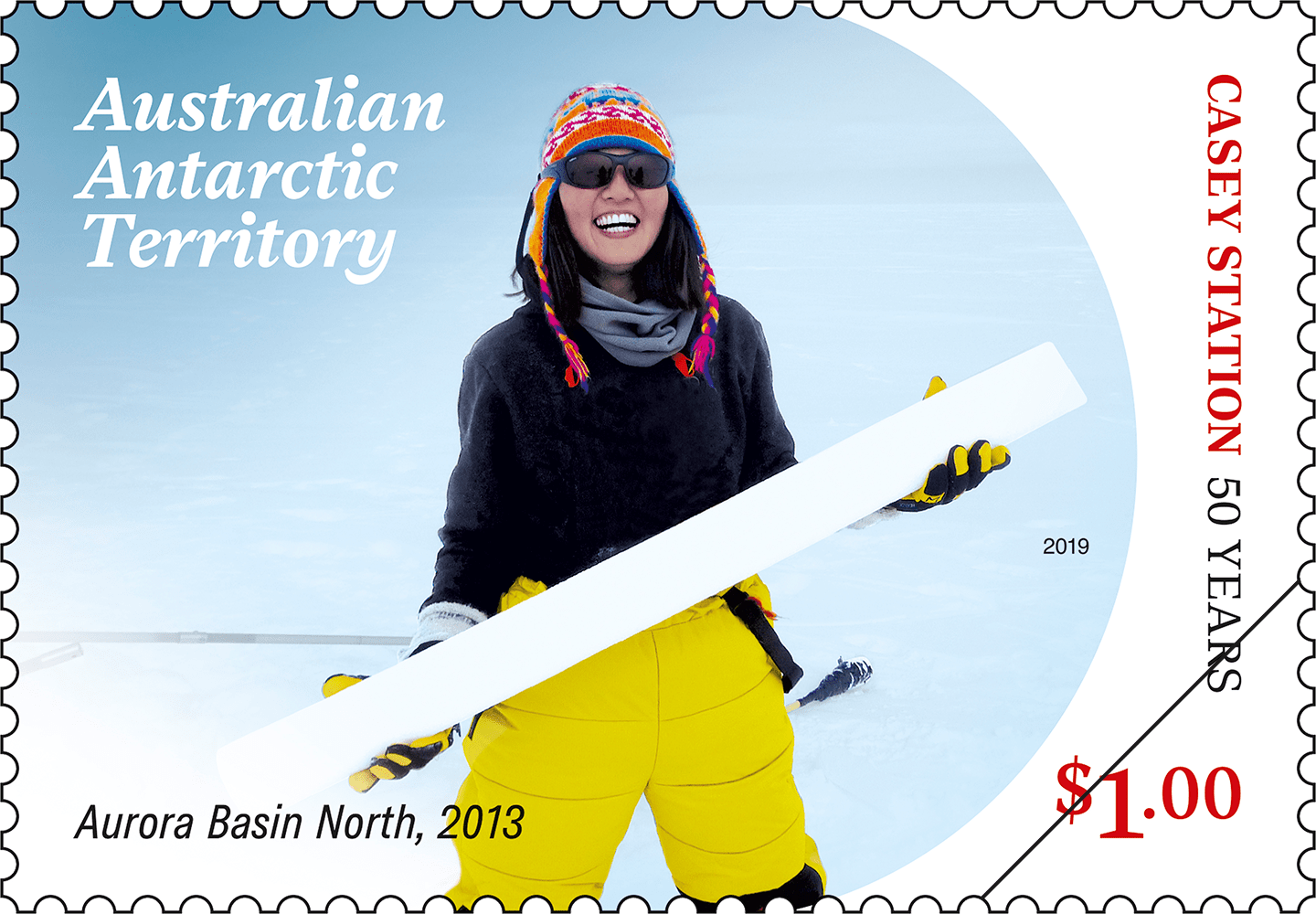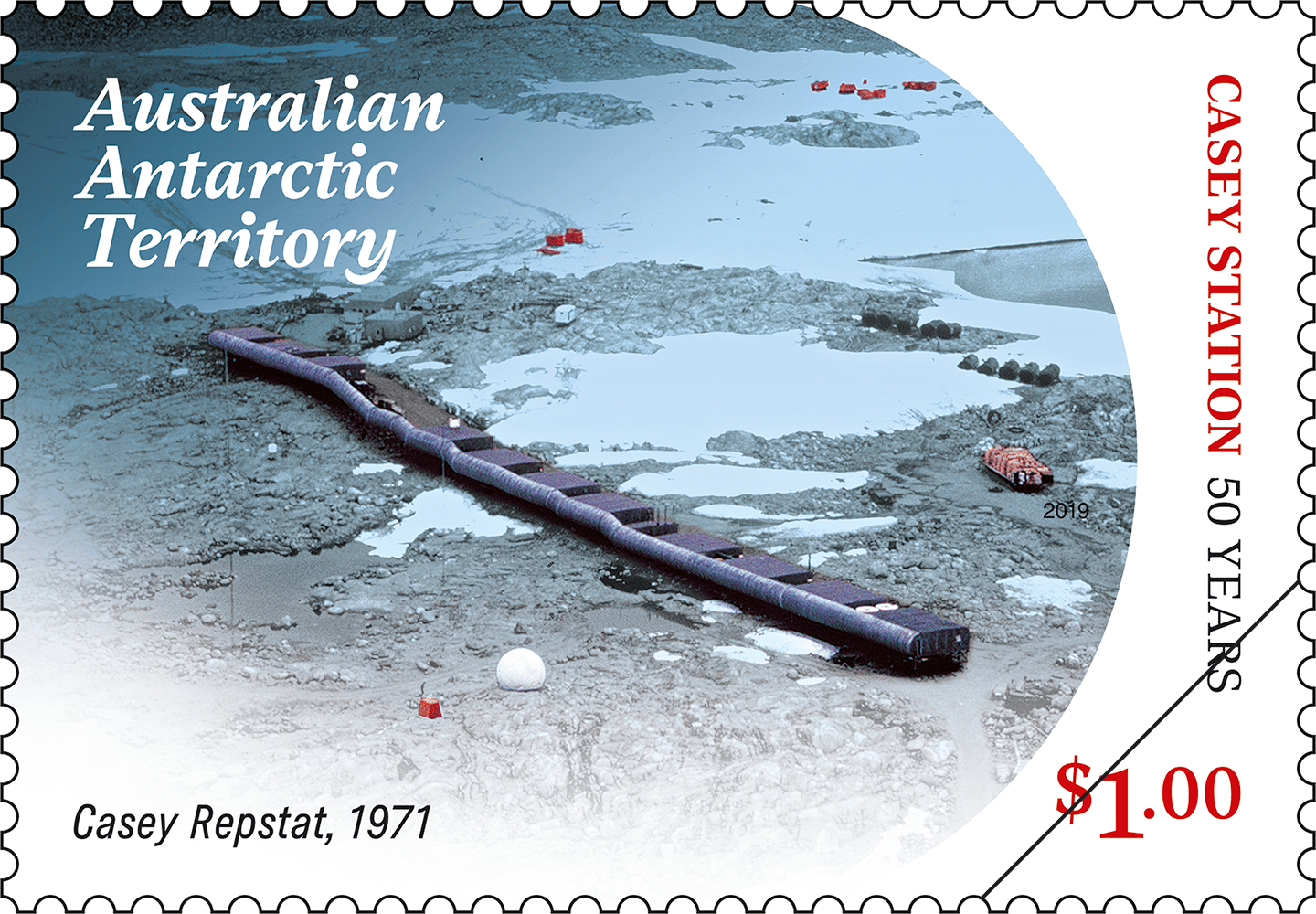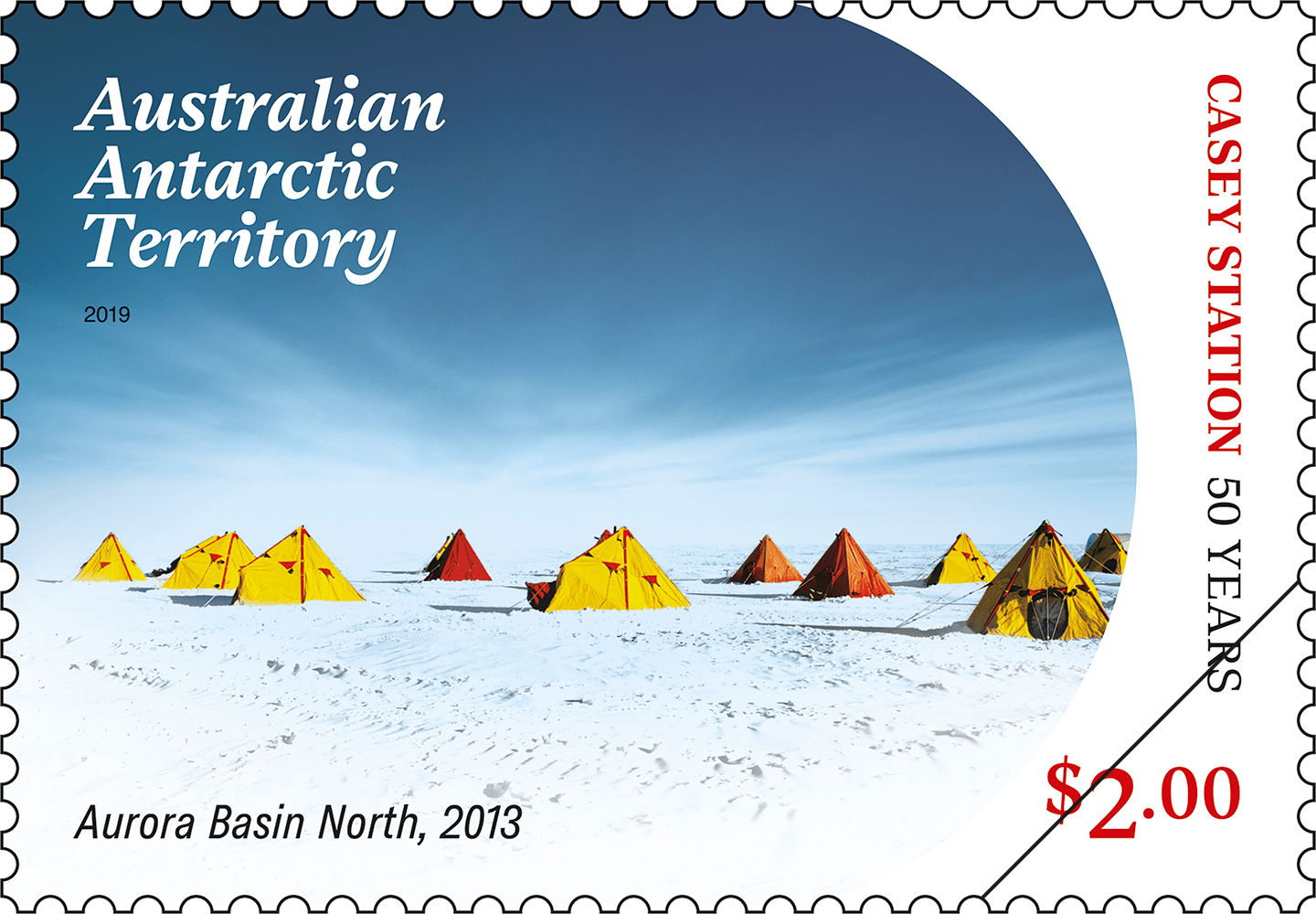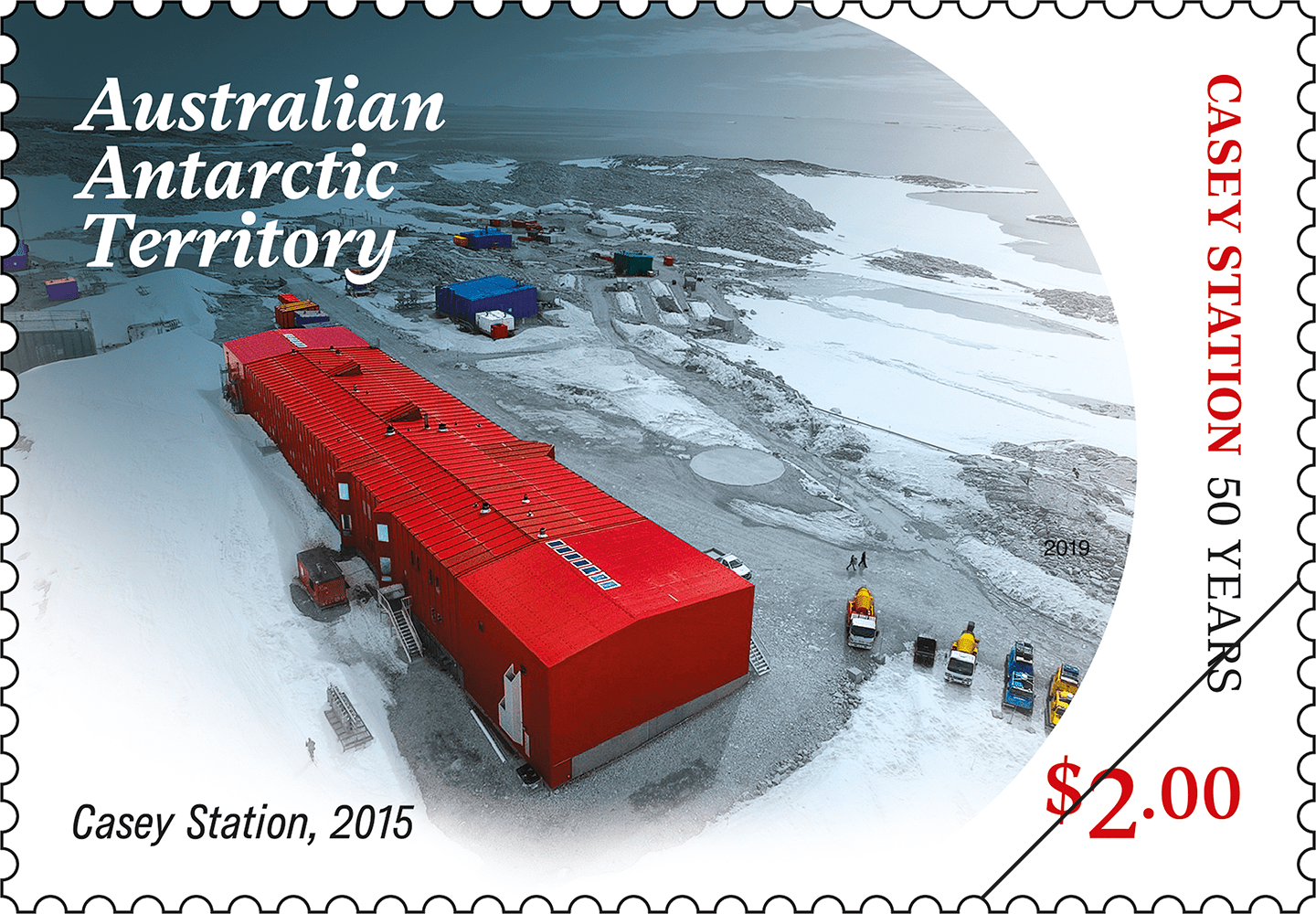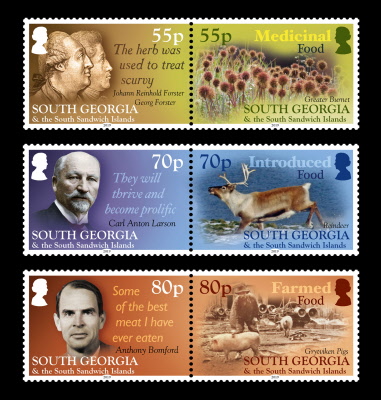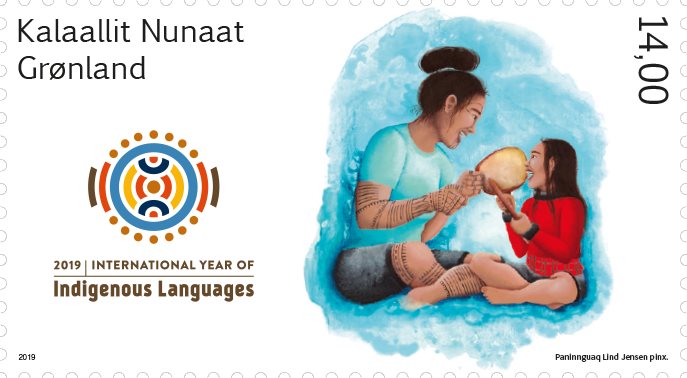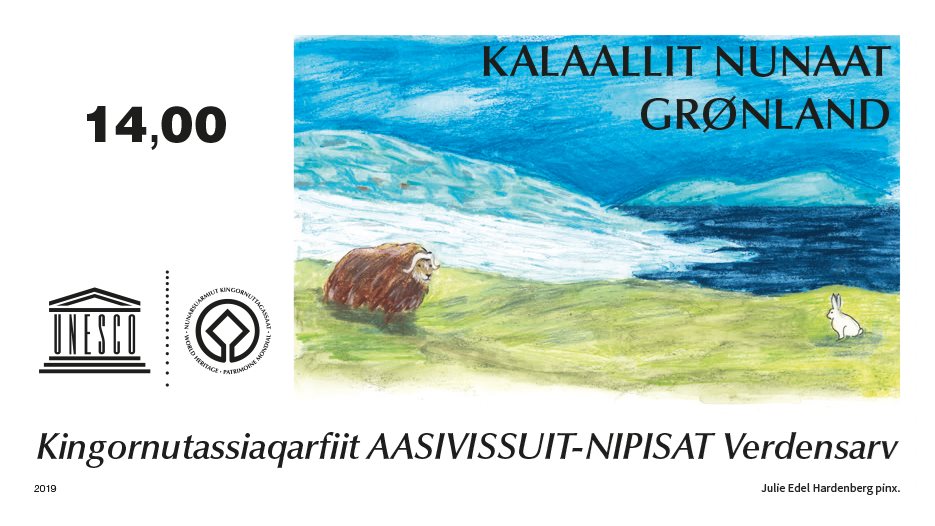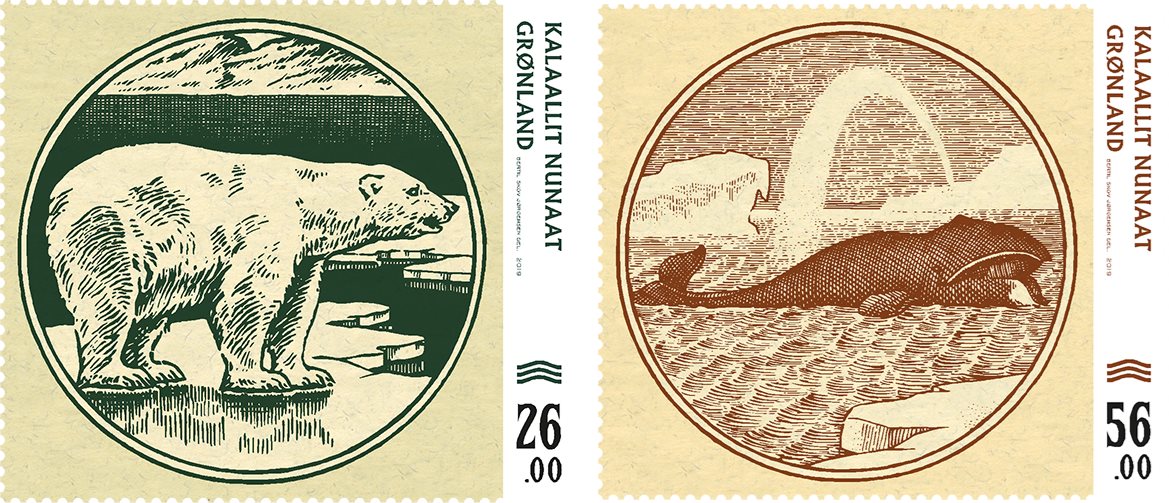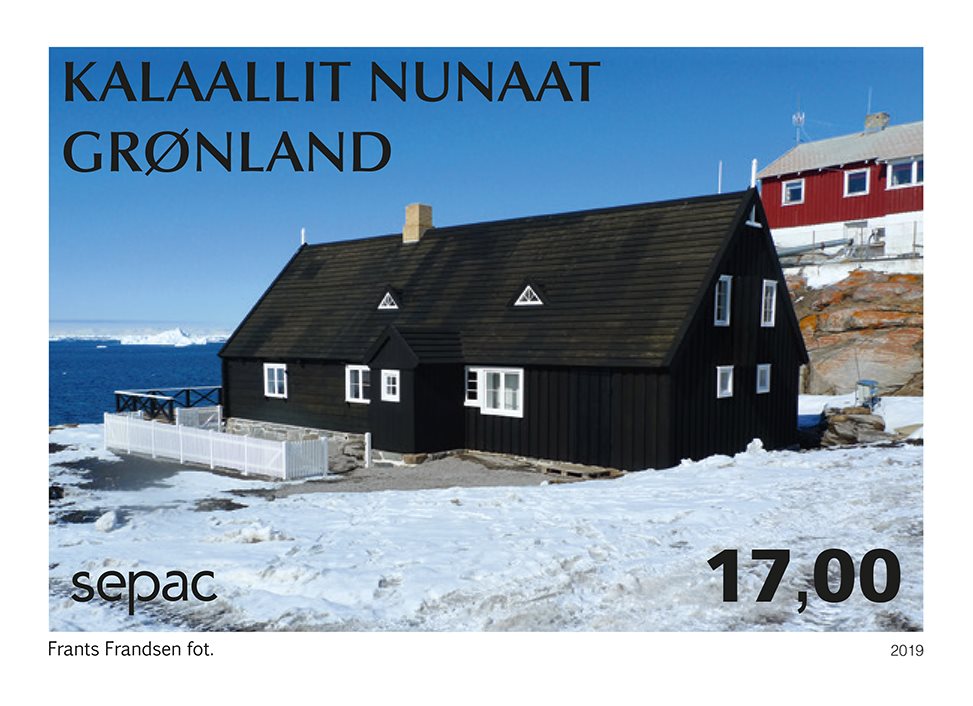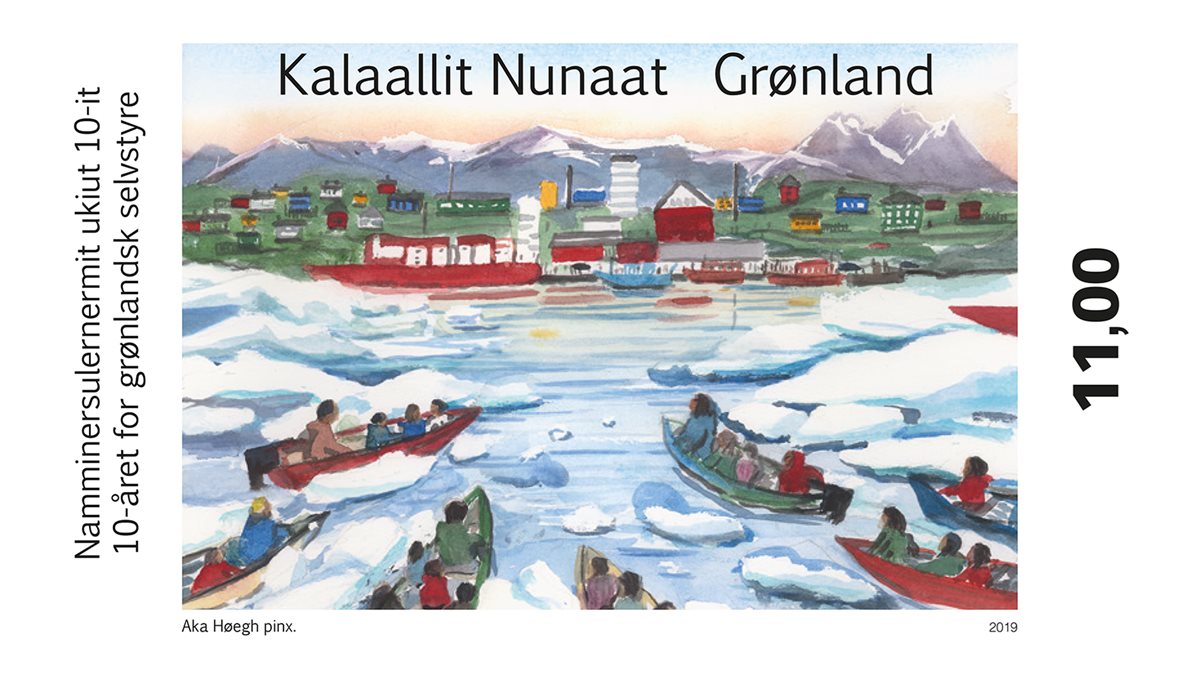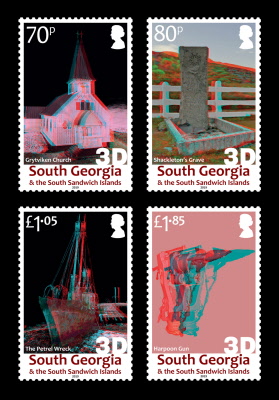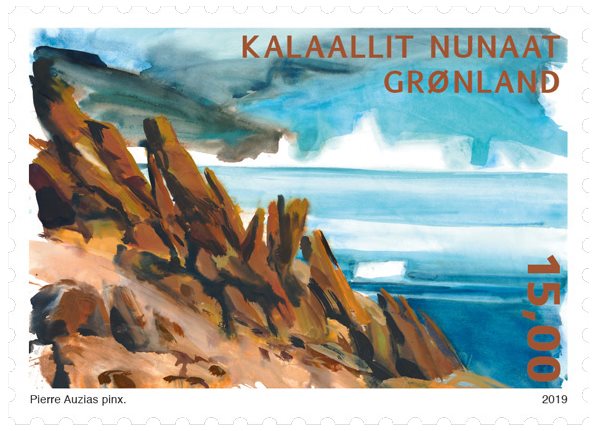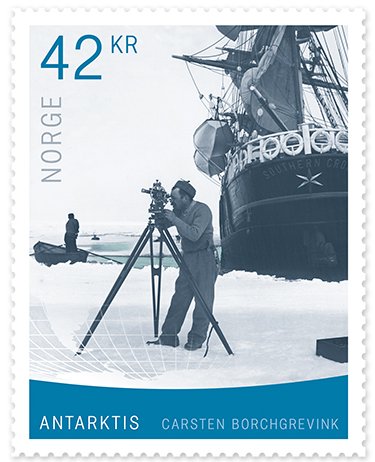Polar Stamps 2019
New Issue - British Antarctic Territory, 200 year Anniversary 21st November 2019
Marking 200 years since the discovery of Antarctica, the British
Antarctic Territory is delighted to present this commemorative stamp
set.
Since discovery, Antarctica has had a chequered past. Once news of these
new lands was known, exploitation of its abundant seal population began
almost immediately; later it was whalers that would exploit the
Antarctic environment. While the animals of the Southern Ocean were
devastated by those seeking profit others were drawn by the challenge of
exploring the great white continent and conquering its imposing
interior. During the 20th century, the focus of human activity in
Antarctica shifted to a new form of exploration, as scientists began to
study the continent and steps were taken to protect the Antarctic’s
biodiversity
New Issue - South Georgia, Centenary of the Scott Polar Research Institute 20th November 2019
Founded in 1920, as part of the University of Cambridge, the Scott Polar
Research Institute (SPRI) is the oldest international centre for polar
research within a university. The SPRI's mission is to enhance the
understanding of the polar regions through scholarly research and
publication, educating new generations of polar researchers, caring for
and making accessible its collections, and projecting the history and
environmental significance of the polar regions to the wider community
for public benefit.
This stamp commemorates the SPRI’s centenary and depicts Sir Ernest
Shackleton with the Endurance, which took he and his crew on his third
expedition to the Antarctic. Departing in 1914 Shackleton and his men
intended to undertake the first crossing of Antarctica via the South
Pole.
New Issue - British Antarctic Territory, Centenary of the Scott Polar Research Institute 20th November 2019
Marking 200 years since the discovery of Antarctica, the British
Antarctic Territory is delighted to present this commemorative stamp
set.
The stamps illustrate the origins of SPRI and the Institute today. Founded in 1920, as part of the University of Cambridge, the Institute is the oldest international centre for polar research within a university.
SPRI’s mission is to enhance the understanding of the polar regions through scholarly research and publication, educating new generations of polar researchers, caring for and making accessible its collections and projecting the history and environmental significance of the polar regions to the wider community for public benefit.
New Issue - British Antarctic Territory, Port Lockroy 19th November 2019
Marking 75 years since the secret wartime mission Operation Tabarin. The
British Antarctic Territory are delighted to present this stamp set
showing the changing face of one of the best-known sites in Antarctica
and origin of the British Antarctic Survey – Port Lockroy.
Port Lockroy is a Historic Site and Monument operated by the UK
Antarctic Heritage Trust (UKAHT). Opening each Antarctic summer, Port
Lockroy houses a small UKAHT team each season who welcome visitors to
Base A, which is now a living museum and the world’s most southerly
public Post Office.
New Issue - British Antarctic Territory, Icebergs 19th November 2019
In July 2017 an area of floating ice shelf four times the size of London broke away from the Larsen Ice Shelf, within the British Antarctic Territory (BAT). Known officially as ‘A68’ is one of the largest icebergs on record.
Icebergs can present a serious maritime danger, with up to 90 percent being below the surface. They can also be spectacular to look at, transforming as they melt. Small bits of disintegrating icebergs are called “growlers” or “bergy bits”. The A68 was a large ‘tabular’ iceberg. This latest stamp set from the BAT Government depicts a range of some of these stunning and intriguing icebergs.
New Issue - Greenland, Enviroment in Greenland 21st October 2019
The next two stamps in our series about ’The Environment in Greenland’
will is created by the Greenlandic artist, Naja Rosing-Asvid. As with
the previous four stamps in this series, these latest stamps are printed
in offset on self-adhesive paper. Both stamps are issued as full
sheets.
Coal bag tags played an interesting role in twentieth century
Greenland. We have been looking forward to expounding upon this historic
theme, which Miki Jacobsen has so beautifully interpreted in two stamps
released on this date. Both stamps are printed in offset and issued as
full sheets.
New Issue - Greenland, Coal Bag Tags 21st October 2019
Coal bag tags played an interesting role in twentieth century Greenland. We have been looking forward to expounding upon this historic theme, which Miki Jacobsen has so beautifully interpreted in two stamps released on this date. Both stamps are printed in offset and issued as full sheets.
New Issue - South Georgia, Habitats Restored 20th September 2019
Over the last 250 years, human activities have had a profound impact on
the flora and fauna of South Georgia. Sealing began in the late 1700’s
and expeditions often lived ashore for months at a time. So brutally
efficient was their operation, by the early 1800’s the seal populations
were depleted beyond economic viability and the sealers departed. Next
came the whaling industry. Between 1904 and the 1960’s tens of
thousands of whales were killed, with over 1,000 people employed on the
island to process the catch. The seasonal movement of visiting people
and vessels, and the importing of supplies and equipment, led to
numerous invasive species including rats, mice, reindeer and a wide
variety of plants being either accidentally or deliberately introduced.
Over the last 10 years, South Georgia has played host to some of the
largest habitat restoration projects undertaken anywhere on earth. The
Government of South Georgia & the South Sandwich Islands and the
Norwegian Nature Inspectorate completed a reindeer eradication programme
that used a combination of herding and ground shooting to remove almost
7,000 reindeer from the island. In 2018 South Georgia was declared
rodent free after the South Georgia Heritage Trust undertook a programme
to eradicate rats and mice, using aerial distribution of bait from
helicopters. The benefits of these habitat restoration projects are now
being reaped and native bird and plant populations are thriving as never
before. With the removal of grazing pressure from reindeer, many of the
non-native plants thrived and are now the subject of an on-going weed
management plan which aims to reduce 33 of the 47 non-native plants to
zero population density by 2020.
New Issue - Norway, Nordia 23rd August 2019
Norway issued its first stamp on 1 January 1855. The following year a
stamp featured a person for the first time: King Oscar I. The Posthorn
series is the world's longest running series of stamps, and 5.3 billion
posthorn stamps have been issued in Norway since its start!
We have had round stamps and heart-shaped stamps, scented stamps, and stamps with Braille, meteorite dust and hidden messages. The stamps for the Lillehammer Olympics gave us the greatest stamp
celebration of all times and were in demand all over the world.
Norwegian stamps have received many awards, and the stamps for the Nobel
Peace Prize centenary in 2001 were named the year's most beautiful
stamps. Stamp no. 2,000 is celebrated with its own miniature sheet issued on the opening day of the Nordia 2019 stamp show.
New Issue - AAT, Mapping the AAT 20th August 2019
For centuries, the idea of a remote continent in the Southern Hemisphere – “Antarktikos” or “Terra Australis Incognita” – sparked the imagination of cartographers. Determined to be the first to map the continent, in 1772 Captain James Cook explored the Southern Ocean, crossing the Antarctic Circle, but failed to reach the landmass. During early exploration in the late 19th century, the first maps were produced by expeditions that charted lengths of the Antarctic coast by ship.
In 1911, Australia’s Douglas Mawson embarked on the Australasian Antarctic Expedition to conduct scientific research, including cartography. Land exploration was undertaken using dog teams and hauling sledges to survey and map more than 6,437 kilometres of what would become the Australian Antarctic Territory.
This stamp issue celebrates more than 100 years of Australian mapping of the Antarctic continent, from Mawson’s early surveys to the computer-assisted maps of the 1990s.
New Issue - AAT, Casey Research Station 50 Years 23rd August 2019
Casey research station is one of Australia’s three permanent research stations in Antarctica. The closest of the continental stations to Australia, Casey is 3,430 kilometres southwest of Hobart and 3,837 kilometres south of Perth. Noted for its blizzard and drift conditions and weather extremes, Casey is situated in an area of low rocky islands and peninsulas on the edge of the Antarctic ice cap.
Casey was officially opened 50 years ago, on 19 February 1969. The station’s initial design had the buildings constructed in a straight line and connected by an aerodynamic corrugated iron tunnel, allowing the flow-through of the region’s frequent violent winds. In December 1988 the present day Casey station was opened. It was built with robust concrete foundations and an external skin of steel-clad polystyrene foam, providing a more modern, comfortable and safe facility.
Scientists based at Casey have contributed to research at Law Dome and Aurora Basin North, the bedrock geology and structure of the East Antarctic ice sheet. The station has also supported marine biologists undertaking experiments on the impact of ocean acidification on polar seafloor communities. In addition, seabird ecologists study Adélie penguins and researchers examine the influence of climate change and human impacts on the fragile Antarctic environment.
New Issue - South Georgia, Food 15th August 2019
Since James Cook first landed on South Georgia in 1775, the island’s history has been closely related to the edible plants and animals found there. Attitudes towards food and appropriate use of natural resources have changed significantly over the subsequent 250 years, but the rich associations and stories behind food remain an important part of the islands cultural heritage.
New Issue - Greenland, UN International Day 9th August 2019
The UN international day of the world’s indigenous peoples is
commemorated each year on this date. In 2019 we shall celebrate this
special day with another stamp. We look forward to announcing, at a
later date, which artist will be creating the design.
New Issue - Greenland, UNESCO in Greenland 21st June 2019
On two previous occasions, we have issued postage stamps to commemorate the inclusion of areas of Greenland on Unesco’s world heritage list. We are now continuing this tradition, as Unesco last year added the nature area of Aasivissiut-Nipisat in western Greenland to this same prestigious list. Julie Edel Hardenberg has created the beautiful image that adorns this stamp. It will be printed in offset.
New Issue - Greenland, Old Bank Notes 21st June 2019
’Old Greenlandic Banknotes’, illustrated by Bertil Skov Jørgensen, is another series that will be continued in 2019, in the format of another two stamps, to be issued as both full sheets and souvenir sheets. Combined offset and laser etching will yet again be chosen for the printing.
New Issue - Greenland, Old Residential Houses 21st June 2019
’Old Residential Houses’ is the theme chosen for this year’s Sepac series. The small European postal operators’ network therefore continues its stamp issuing collaboration to allow collectors to obtain all of the year’s Sepac stamps in one special folder.
New Issue - Greenland, EUROPA National Birds 21st June 2019
The year’s EUROPA stamp theme is ’National Birds’. Naja Abelsen is excellent at depicting animal images. Therefore, she was entrusted with the task of drawing these stamp designs, which will be printed in offset and produced as full sheets plus as a self-adhesive booklet containing six of each of the two EUROPA stamps.
New Issue - Greenland, Self Rule in Greenland 21st June 2019
In 2009 Greenland became self-governing. We are, therefore, commemorating the tenth anniversary of Greenlandic self-rule with a special stamp, created by highly-regarded artist Aka Høegh. The stamp will be issued on 21st June, our national holiday.
New Issue - South Georgia, 3D Grytviken 10th May 2019
Although nothing can stop the advance of time and the ravages of the South Georgia weather, new technologies mean that the whaling stations and some of the stories associated with them can be captured in detail like never before.
The Government of South Georgia & the South Sandwich Islands along with the Norwegian Directorate for Cultural Heritage commissioned New Zealand company, Geometria, to carry out ground breaking work. Geometria used LIDAR or laser scanning technology along with photogrammetry and drone footage to systematically map the stations inside and out. The laser scanning was achieved by setting up tripod mounted laser arrays within the whaling stations and then by taking distance measurements in all directions. This meant they were able to capture the 3D surface of the buildings and landscapes in breathtaking detail.
New Issue - Greenland, Abandoned Stations 21st January 2019
In 2017 we began our series entitled ’Abandoned Stations in Greenland’. Artists Sissi Møller and Lisbeth Karline have now each created a beautiful design that are being reproduced on the final two stamps in the series. Both stamps are printed in offset.
New Issue - Greenland, Abandoned Stations 21st January 2019
There are Arctic deserts in Greenland. This phenomenon is illustrated on two attractive stamps, the first of which will be issued on 21st January. Pierre Auzias from Uummannaq is the creator of this stamp issue, which is printed in offset.
New Issue - Norway, Antarctica 4th January 2019
Queen Maud Land, which was annexed by Norway in 1939, is almost seven times larger than Norway – and constitutes one-sixth of the of the total area of Antarctica.
James Cook was the first person to offer a detailed description of the
waters around the frozen land mass called “Terra Autralis” from his
travels in 1772 and the years that followed. It was not until 1819,
though, that the first real expedition took place when Russian czar
Aleksander I sent an expedition under the leadership of Admiral Fabian
Gottlieb von Bellingshausen. Later, a number of expeditions were made to
Antarctica. It is said that William S. Bruce from Scotland was the
first person to set foot on Queen Maud Land, but it was the Norwegians
who would be the first to actively map the area.
The objective of the Norwegian annexation of Queen Maud Land was not to exclude other states but rather to prevent the Norwegian whaling industry from being excluded or treated disproportionately as a result of the activity of the other countries.
Several Norwegians have been prominent in the exploration of Antarctica. Polar researcher and explorer Carsten Egeberg Borchgrevink was a pioneer – and he established much of the basis for later expeditions led by Robert F. Scott, Ernest Shackleton and Roald Amundsen. Borchgrevink’s career in Antarctica started in 1894 as a member of a Norwegian whaling expedition, and he was one of the first to gather samples of living, organic material south of the southern Arctic circle.


